No products in the cart.
Exact Replica Watches
Cellini, The Least Rolex, Who Sells The Best Replica Watches
Regarding Rolex, the watches that most readily come to mind are the Submariner (Submariner) and the Daikin Rolex Day-date, both of which have self-winding movements and Oyster-style waterproof cases. Other GMT, Sky-Dweller, Explorer, and other series are more or less related to them. Therefore, many people say that Rolex is “unchanged and has no new ideas.”
But Rolex has a unique “Cellini” series, which is not well known to the public. It is also known as “the least Rolex Rolex.”
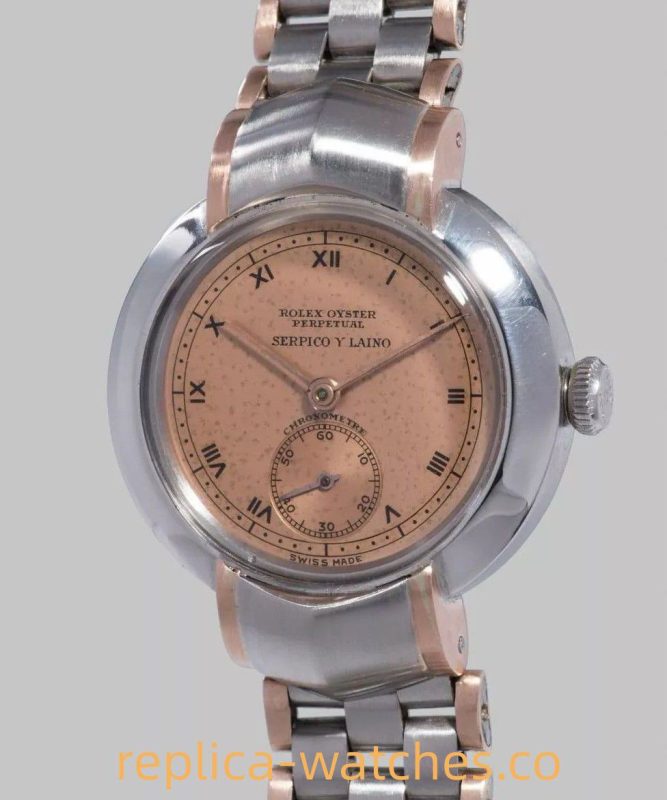
In the impression of most watch friends, Rolex is a “stable” brand. But, for a long time, Rolex, like other watch brands, made watches for money, producing all kinds of messy, strange, and incredible styles. For example, this rose gold waterproof watch was made for the South American dealer Serpico y Laino in the 1930s. Who sells the best replica watches.
In 1953, Rolex ushered in a significant turning point in the brand’s history. Rolex launched the “Explorer” series in 1953, thus opening a new era of “tool watches.”
1953, Explorer; 1953, Submariner; 1955, Greenwich GMT; 1956, Milguass; 1960, Deep Sea Special.
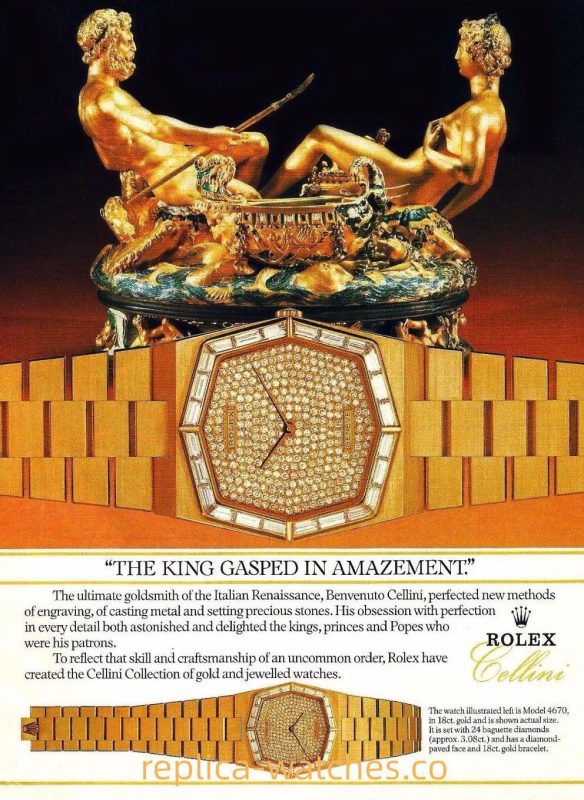
With the success of the “tool watch,” Rene-Paul Jeanneret, then Rolex’s marketing director, began to think about creating watches more suitable for grand formal events, thus launching the “Cellini” series in the early 1960s. The name comes from the famous Italian Renaissance sculptor Cellini in the 16th century.
The “Cellini” Cellini series is designed for banquet events. It is very similar to Piaget’s watches. Its watches will be thinner and lighter, and the focus is on appearance design. As a result, most of the “Cellini” series use manual movements and non-Oyster waterproof cases to reduce size and thickness. Luxury replica watches.
The reason why Rolex is so successful today must be inseparable from the two most essential technologies, “Oyster waterproof” and “Perpetual movement.” The “Cellini” series did not use these two technologies, so since its birth, it has not been popular in the market and relegated to the sidelines for a long time.
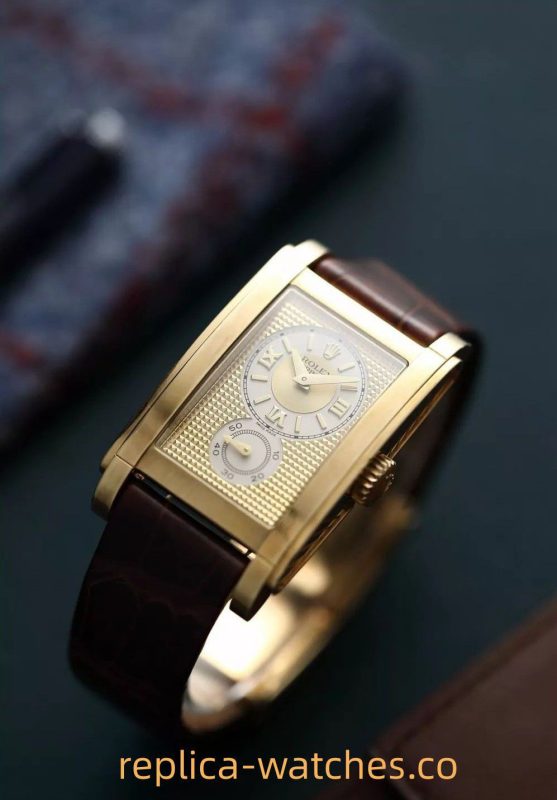
However, Rolex did not give up on the Cellini series. In 2005, it launched a new Cellini Prince, vowing to bring together the “most distinctive selling points” to drive sales. This watch follows the rectangular appearance design of the Rolex Prince, born in 1928. It is highly recognizable and is a significant breakthrough for modern Rolex.
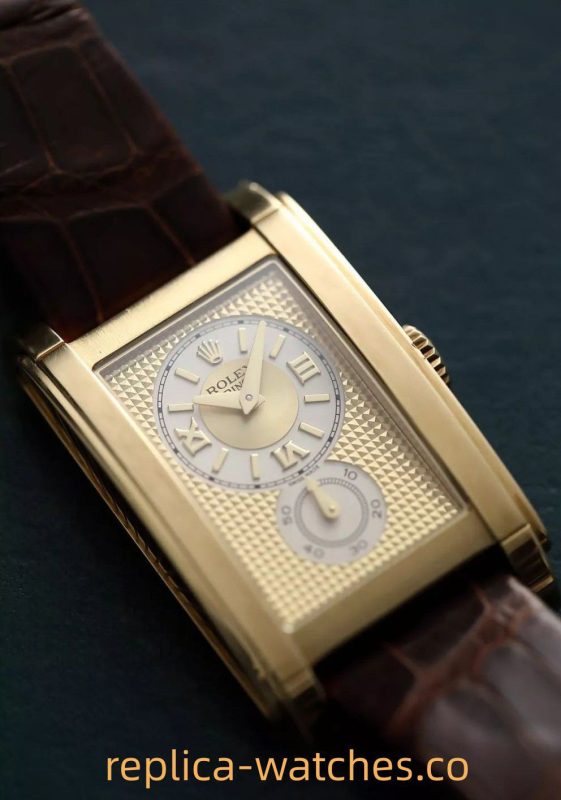
Cellini Prince does not display the standard “big three needles” but the “small three needles.” Because the independent second hand is easier to read, it is easier for doctors to measure pulse and heart rate, so Prince is also nicknamed the “doctor’s watch.”
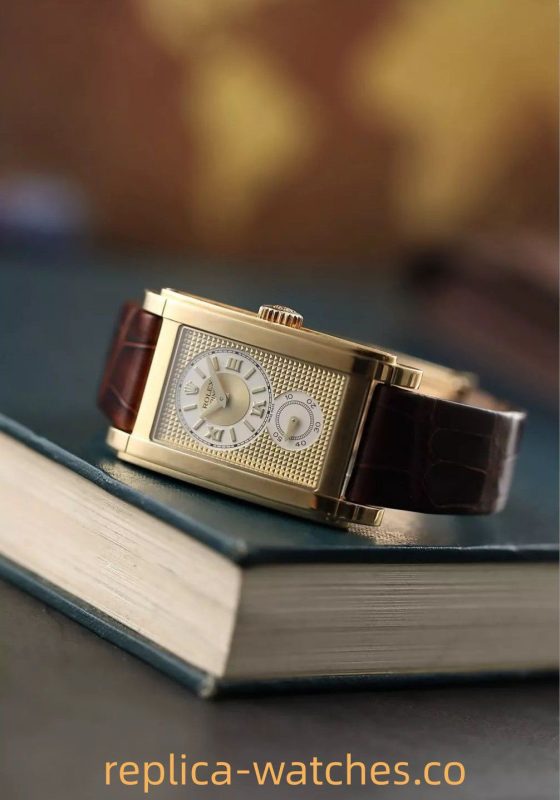
Modern Rolexes use precious metals to make scales and hands to avoid oxidation. In addition to this superficial appearance, the unique selling point of Cellini Prince is its use of “Paris Nail” dial decoration technology. Pyramid-shaped protrusions cover the entire dial, emitting light and creating a strong three-dimensional effect.
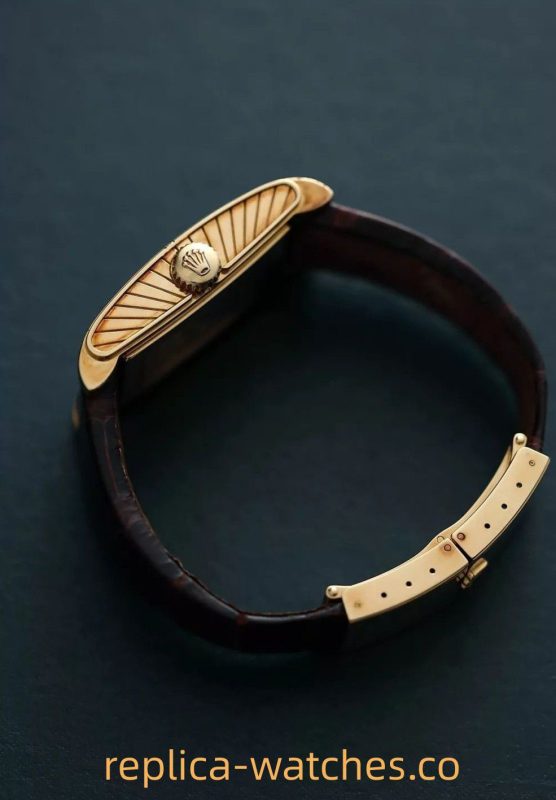
The sides of the case are also decorated with complex radial textures. Cellini Prince uses a separately customized rectangular folding case to balance the vast 45mm x 29mm case.
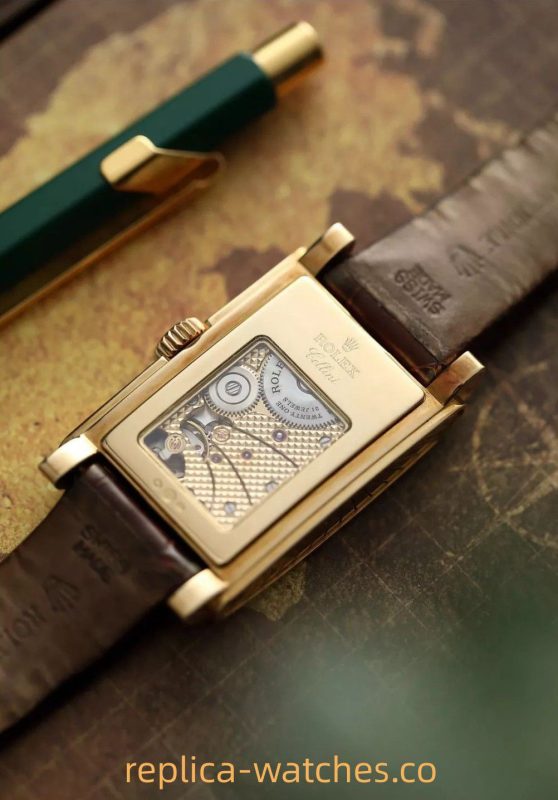
Turn to the back, and you can see the most different part of this Cellini Prince.
It adopts a see-through bottom cover design, the only Rolex see-through watch in mass production.
In the early days, Rolex only made dense-bottom models mainly because of the need for waterproofing. Because of the technical level at that time, creating a waterproof back-through bottom cover was complex, costly, and thick. Today, Rolex does not use back see-through on a large scale, primarily due to the consideration of “brand historical tradition.”
To increase the selling point of Prince and save the Cellini series, Rolex did not hesitate to break its many years of tradition.
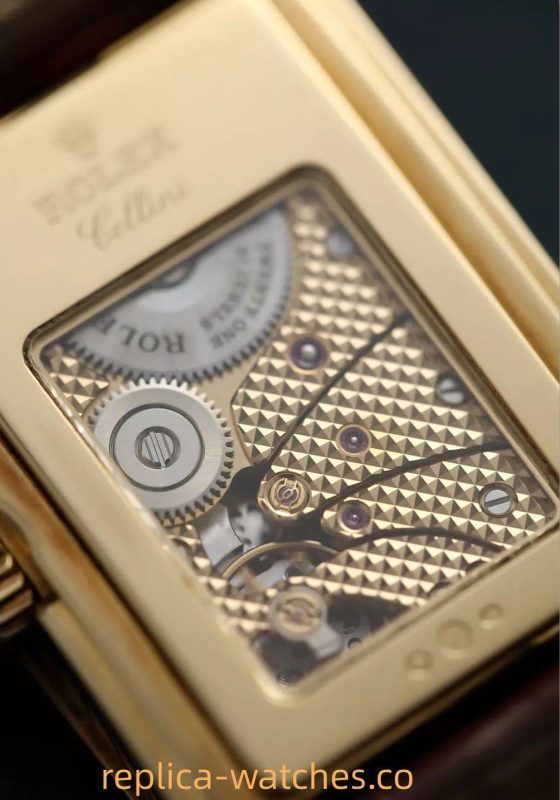
The movement displayed under the transparent bottom cover distinguishes Cellini Prince from other Rolexes. It can be called “unprecedented and unprecedented.”
The research development and production of movement costs a lot, and many brands will choose “square watch and round core” to reduce costs. Rolex has independently developed a Cal.7040 movement for the Cellini Prince. It uses Paraflex shock absorbers, cross-bridge fine-tuning balance splints, screw fine-tuning, and Parachrom Breguet hairsprings. It provides 72 hours of ultra-long power and is certified by the COSC Observatory.
Not only is the configuration high, but what is even more impressive is that to echo the dial design style of each watch, Rolex has released four different movement polishes based on Cal.7040. In addition to the Paris nails in the picture, there are also radial patterns and concentric circles. This approach is not unique in the Rolex brand’s history but is extremely rare in the entire watch circle.
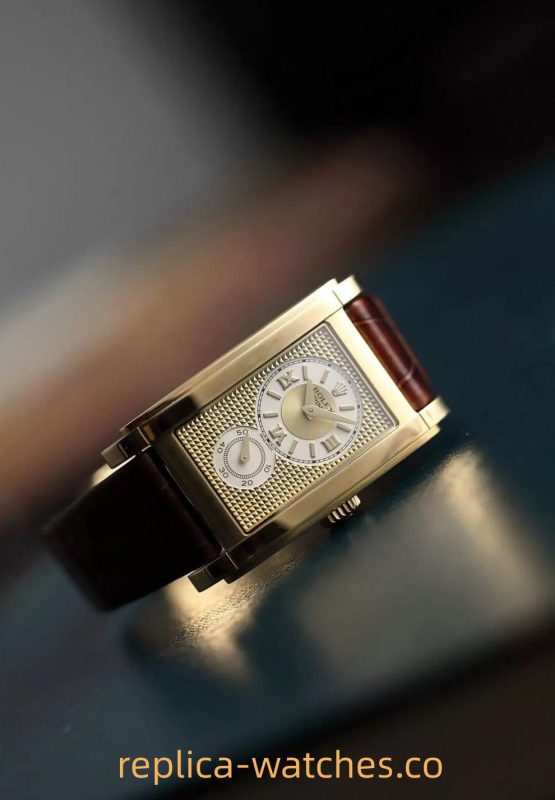
Such configuration and design make Cellini Prince a typical example of “applause but not popular.” Ordinary consumers sneer at its manual and non-waterproof design, but collectors and enthusiasts praise and are obsessed with it. The differentiation is severe.
Despite such slow sales, Rolex’s support for the Cellini series has continued. In 2014, Rolex released the new Cellini series. While retaining the original intention of a formal watch, it adopted a 50M waterproof case + automatic winding mechanical design for the first time. In 2017, Rolex continued its efforts and launched Ref. 50535 in the Cellini series. This was the first time in nearly 70 years that the brand enabled the moon phase function.
It is no exaggeration to say that Cellini is an anomaly in the history of Rolex, and Cellini Prince is the least Rolex.
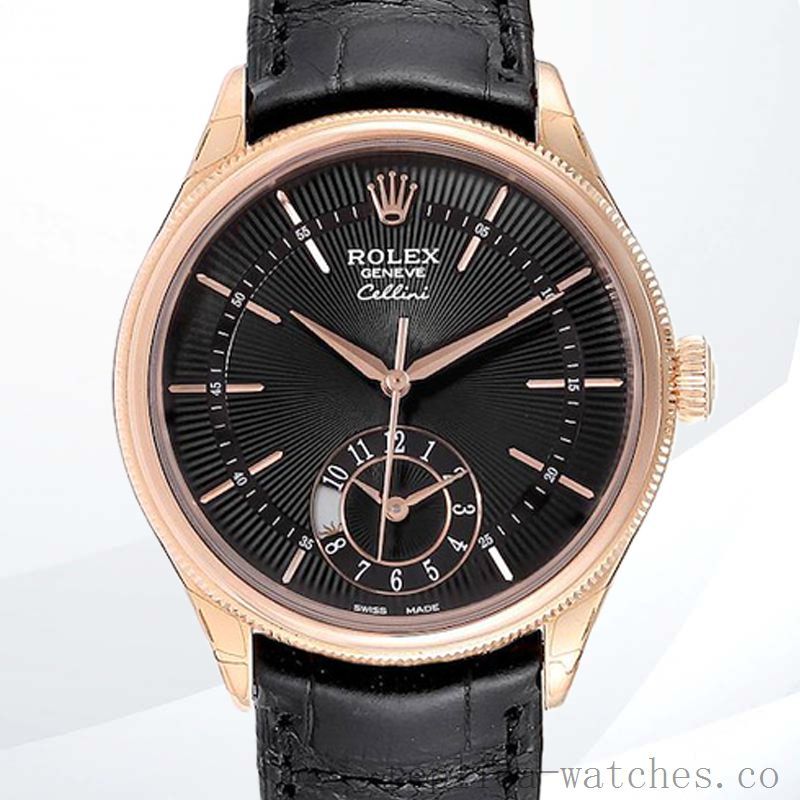
Case Size: 39mm
Dial Color: Black Dial
Case Color: Rose Gold-tone
Band Color: Black
Series: Cellini
Brand: Rolex
Model: m50525-0011
Gender: Men’s
